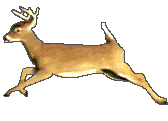Early life
Audubon was born in Les Cayes, Haiti (then the colony of Saint-Domingue)[1] on his father's sugar plantation. He was the illegitimate son of Lieutenant Jean Audubon, a French naval officer (and privatee), and his mistress Jeanne Rabin, a chambermaid recently arrived from France.
They named the boy Jean Rabin. His mother died when the boy was a few months old, as she had suffered from tropical diseases since arriving on the island. His father already had two mixed-race children by his mulatto housekeeper, Sanitte, and he took up with her again and had another daughter following Jeanne Rabin's death. Sanitte also took care of the infant boy Jean.
During the American Revolution, Jean Audubon was imprisoned by the British. After his release, he helped the American cause.A slave rebellion in Saint-Domingue in 1788 convinced Jean Audubon to sell his holdings and return to France with his French son and infant mixed-race daughter, who was very fair. (She was the daughter of Sanitte.)
Rabin was raised by his father and stepmother Anne Moynet Audubon in Nantes, France, who formally adopted both the children in 1794.They named the boy Jean-Jacques Fougère Audubon. When Audubon at age 18 boarded ship for immigration to the United States in 1803, he changed his name to an anglicized form: John James Audubon.
From his earliest days, Audubon had an affinity for birds. "I felt an intimacy with them…bordering on frenzy must accompany my steps through life." His father encouraged his interest in nature; "he would point out the elegant movement of the birds, and the beauty and softness of their plumage.
He called my attention to their show of pleasure or sense of danger, their perfect forms and splendid attire. He would speak of their departure and return with the seasons."In France during the chaotic years of the French Revolution and its aftermath, Audubon grew up to be a handsome and gregarious young man.
He played flute and violin, and learned to ridfence, and dance. He was hearty and a ge,reat walker, and loved roaming in the woods, often returning with natural curiosities, including birds' eggs and nests, of which he made crude drawings
His father planned to make a seaman of his son. At twelve, Audubon went to military school and became a cabin boy. He quickly found out that he was susceptible to seasickness and not fond of mathematics or navigation. After failing the officer's qualification test, Audubon ended his incipient naval career. He was cheerfully back on solid ground and exploring the fields again, focusing on birds.
Source

